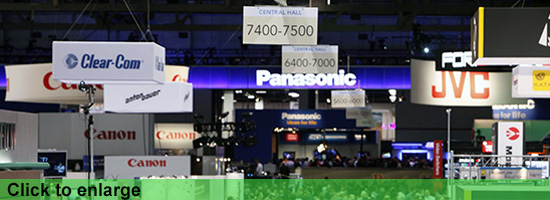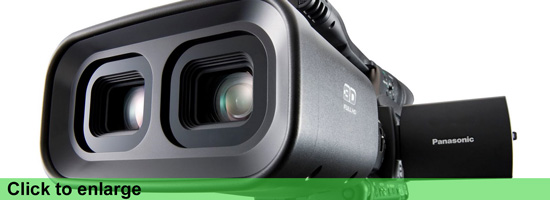
Thoughts about 3D Technology
I have been talking about the various merits and faults of 3D with my colleagues going back to a demonstration I saw in April of 2011 at the NAB convention in Las Vegas. I thought I would try and elucidate some of these thoughts and see if anyone had interest in replying.

I would like to start off with describing a simple experiment that illustrates the basic idea behind modern 3D video:
With both eyes open, point your finger at the place where the ceiling meets 2 walls. Now close your right eye. If your right eye is dominant, your finger will not appear to move, or will only move a small bit. Open both eyes and point again. Now close your left eye. Your finger will have appeared to move quite a bit. Now you will know if you are left eye dominant or right eye dominant. Note that this does not necessarily correlate to your dominant hand.
What is important for this discussion is the difference in focus between your two eyes.

This is the mechanism that enables one’s depth perception. This is what a modern 3D camera seeks to emulate. These cameras use two lenses which allow a three-dimensional signal to be recorded by determining the differences between the two images which is analogous to how your brain decodes your own three-dimensional vision. But these images are displayed on two-dimensional screens. In order to give depth to the image, glasses are used.

What is interesting for me is that while watching a live broadcast of a sporting event, I found the image presented to be very disconcerting. I felt a little nauseous in fact! A possible explanation for my discomfiture is that when I am moving through space, my brain is being fed information from all of my senses, not just my eyes. So my orientation is affected by my inner ear, for balance, by my hearing and also by the interrelation with my movements, gravity and so forth. When viewing a live 3D broadcast, I am affected only by the visual content, which is akin to looking through someone else’s eyes without being connected to the rest of their sensory input. This is particularly apparent when the images from handheld cameras are on screen. A realistic surround sound image would be helpful, but of course the soundfield is different from every visual perspective, and a live surround mix cannot possibly take all of the various perspectives in account. What is generally done, is that one perspective is chosen, and the surround matrix is built in coherence with it.

It is possible that stabilizing the cameras with gyroscopically controlled panheads will alleviate some of the discomfiture issues, but that still leaves the rest of the sensory inputs to be concerned with. To my knowledge, there have been no definitive studies published on the effect of surround audio in combination with 3D imagery in terms of image stability. There have certainly been papers presented regarding localization of sound in a surround matrix, especially in respect to video game production. Studies indicate that audio information presented in 3D improves reaction time, as noted in certain high stress environments such as airplane cockpits.[1] Will accurate 3D audio reproduction have a positive effect on viewer reaction to 3D disorientation? It has yet to be seen.
3D technology is still relatively new, and is being studied and improved upon constantly. Perhaps the answer may be to place the viewer in the center of a holographic matrix where one could possibly have a better connection between motor control and perception.
Include Footnote Link (PDF) - Psyko Audio Labs , Surround Technologies for headphones.
I more or less cited this article when talking about the correlation between 3D audio and reaction time. I have noticed that when mixing for TV - by having the various "instructions" (director/producer, etc) come from different speakers in different locations, I can react faster and understand better.
Daniel Littwin , director New York Digital.
contact: daniel.nydigital@gmail.com
São Paulo, Brazil
Mentioned:
NAB convention in Las Vegas